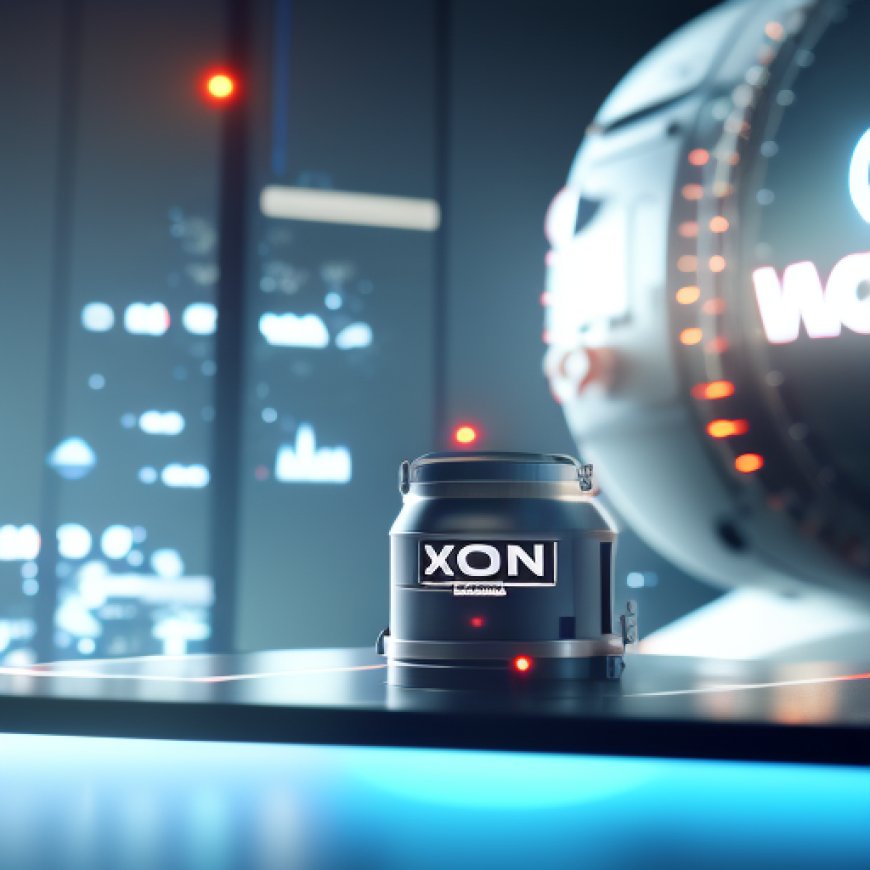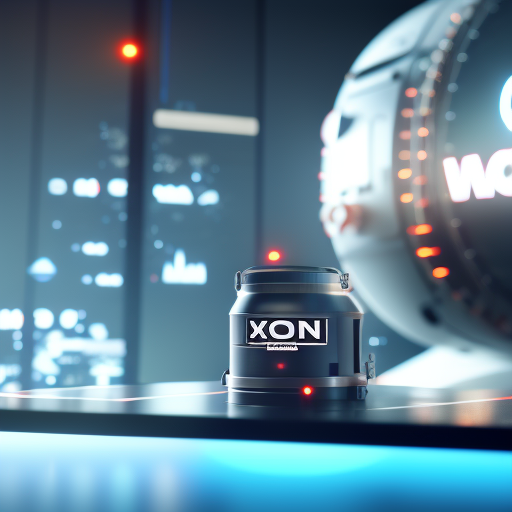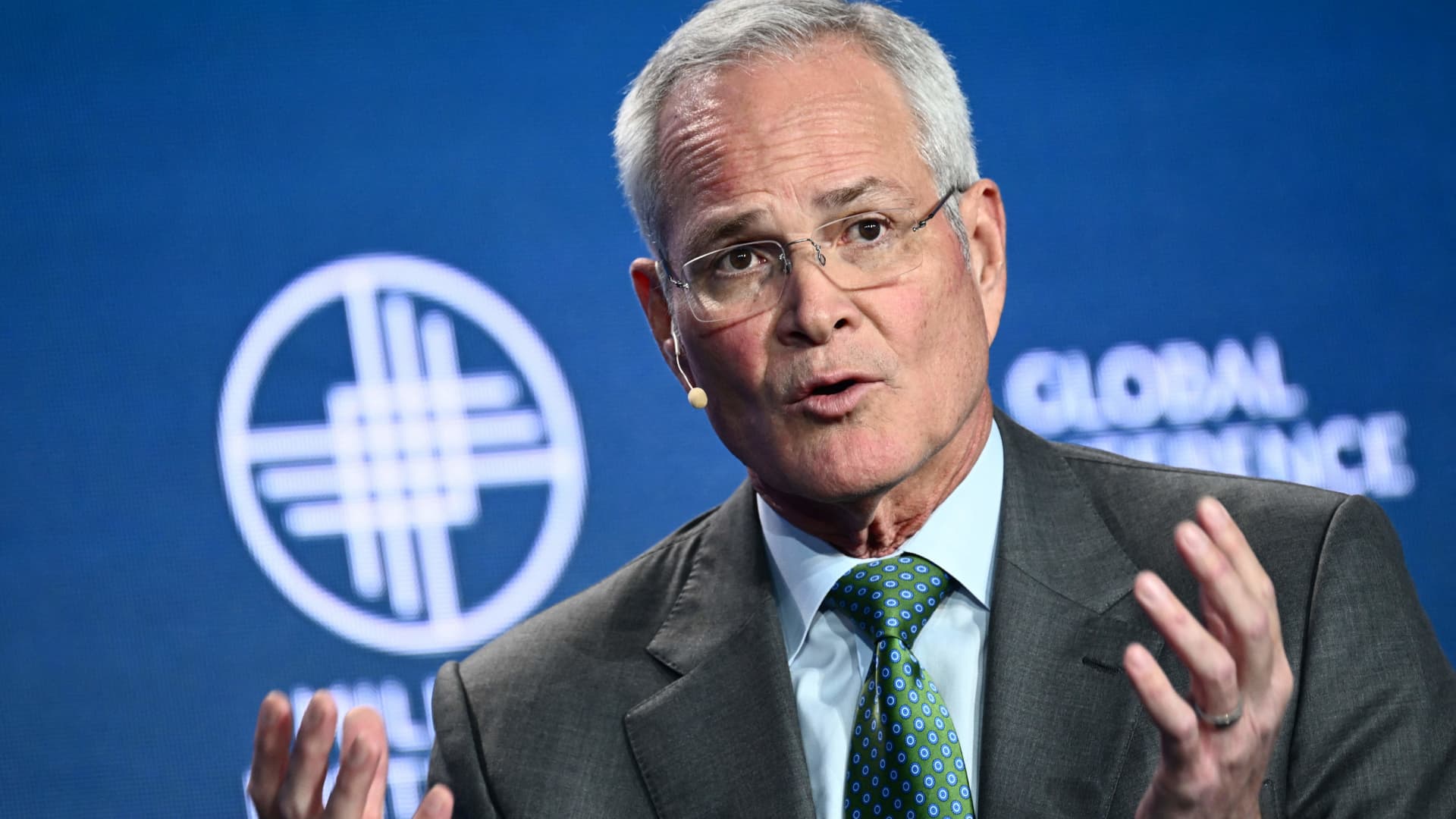Exxon is working on tech to remove CO2 from atmosphere but a breakthrough is needed to slash costs
Exxon is working on tech to remove CO2 from atmosphere but a breakthrough is needed to slash costs CNBC


ExxonMobil CEO: Direct Air Capture Technology Key to Achieving Sustainable Development Goals

Introduction
ExxonMobil is actively working on technology to directly remove carbon dioxide from the atmosphere, aiming to reduce costs by half, according to CEO Darren Woods. This initiative aligns with the Sustainable Development Goals (SDGs) and their targets for combating climate change.
Direct Air Capture Technology and its Potential
Direct air capture technology has significant long-term potential as a tool to address climate change. However, its current cost is prohibitively high, ranging from $600 to $1,000 per ton of carbon removed. Woods emphasized the need to make this technology more affordable and broadly applicable to achieve meaningful impact on a global scale.
ExxonMobil’s Pilot Project in Baytown, Texas
ExxonMobil has launched a pilot project in Baytown, Texas, to test the feasibility of its proprietary direct air capture process. Although the technology is still too expensive for global scalability, Woods believes that reducing the current cost by 50% would demonstrate its value and drive further development.
The Cost Challenge and Viability
Woods stated that the cost of direct air capture needs to come down to around $100 per ton of carbon captured for it to become a viable tool in the fight against climate change. The process requires processing a massive amount of air to remove a single ton of carbon dioxide due to its dilute nature.
Collaboration and ExxonMobil’s Role
Woods highlighted that numerous companies and universities are also working on direct air capture technology. Regardless of who achieves a breakthrough, ExxonMobil aims to play a major role in the market. The company’s technical capabilities and expertise will be crucial in the future development of lower-cost direct air capture technology.
Carbon Capture and Storage
In addition to direct air capture, ExxonMobil is actively involved in carbon capture and storage technology. This process focuses on removing higher concentration emissions streams from industrial processes. The company is currently building a pipeline and storage network along the Gulf Coast, with contracts signed to remove emissions from the operations of CF Industries, Nucor, and Linde.
Controversy and Future Outlook
Both carbon capture and direct air capture technologies have faced controversy as tools to address climate change. Some activists accuse the oil industry of using these technologies to prolong the use of fossil fuels. However, the International Energy Agency recognizes the critical role of carbon capture in achieving net-zero global emissions by 2050. The agency also emphasizes the need for the oil and gas industry to prove the scalability and effectiveness of these technologies.
Conclusion
ExxonMobil’s focus on direct air capture technology aligns with the Sustainable Development Goals, particularly Goal 13: Climate Action. By reducing costs and making this technology more affordable, ExxonMobil aims to contribute to the global efforts to combat climate change and achieve a sustainable future.
SDGs, Targets, and Indicators
-
SDG 7: Affordable and Clean Energy
- Target 7.2: Increase substantially the share of renewable energy in the global energy mix
- Indicator 7.2.1: Renewable energy share in the total final energy consumption
-
SDG 13: Climate Action
- Target 13.1: Strengthen resilience and adaptive capacity to climate-related hazards and natural disasters
- Indicator 13.1.1: Number of deaths, missing persons, and directly affected persons attributed to disasters per 100,000 population
- Target 13.2: Integrate climate change measures into national policies, strategies, and planning
- Indicator 13.2.1: Number of countries that have communicated the strengthening of institutional, systemic, and individual capacity-building to implement adaptation, mitigation, and technology transfer
-
SDG 9: Industry, Innovation, and Infrastructure
- Target 9.4: Upgrade infrastructure and retrofit industries to make them sustainable
- Indicator 9.4.1: CO2 emission per unit of value added
| SDGs | Targets | Indicators |
|---|---|---|
| SDG 7: Affordable and Clean Energy | Target 7.2: Increase substantially the share of renewable energy in the global energy mix | Indicator 7.2.1: Renewable energy share in the total final energy consumption |
| SDG 13: Climate Action | Target 13.1: Strengthen resilience and adaptive capacity to climate-related hazards and natural disasters | Indicator 13.1.1: Number of deaths, missing persons, and directly affected persons attributed to disasters per 100,000 population |
| SDG 13: Climate Action | Target 13.2: Integrate climate change measures into national policies, strategies, and planning | Indicator 13.2.1: Number of countries that have communicated the strengthening of institutional, systemic, and individual capacity-building to implement adaptation, mitigation, and technology transfer |
| SDG 9: Industry, Innovation, and Infrastructure | Target 9.4: Upgrade infrastructure and retrofit industries to make them sustainable | Indicator 9.4.1: CO2 emission per unit of value added |
Analysis
1. Which SDGs are addressed or connected to the issues highlighted in the article?
The SDGs addressed or connected to the issues highlighted in the article are SDG 7 (Affordable and Clean Energy), SDG 13 (Climate Action), and SDG 9 (Industry, Innovation, and Infrastructure).
2. What specific targets under those SDGs can be identified based on the article’s content?
Based on the article’s content, the specific targets that can be identified are:
– Target 7.2: Increase substantially the share of renewable energy in the global energy mix.
– Target 13.1: Strengthen resilience and adaptive capacity to climate-related hazards and natural disasters.
– Target 13.2: Integrate climate change measures into national policies, strategies, and planning.
– Target 9.4: Upgrade infrastructure and retrofit industries to make them sustainable.
3. Are there any indicators mentioned or implied in the article that can be used to measure progress towards the identified targets?
Yes, there are indicators mentioned or implied in the article that can be used to measure progress towards the identified targets. These indicators are:
– Indicator 7.2.1: Renewable energy share in the total final energy consumption.
– Indicator 13.1.1: Number of deaths, missing persons, and directly affected persons attributed to disasters per 100,000 population.
– Indicator 13.2.1: Number of countries that have communicated the strengthening of institutional, systemic, and individual capacity-building to implement adaptation, mitigation, and technology transfer.
– Indicator 9.4.1: CO2 emission per unit of value added.
These indicators can be used to track the progress made in increasing renewable energy share, strengthening resilience to climate-related hazards, integrating climate change measures into policies, and upgrading infrastructure for sustainability.
SDGs, Targets, and Indicators
| SDGs | Targets | Indicators |
|---|---|---|
| SDG 7: Affordable and Clean Energy | Target 7.2: Increase substantially the share of renewable energy in the global energy mix | Indicator 7.2.1: Renewable energy share in the total final energy consumption |
| SDG 13: Climate Action | Target 13.1: Strengthen resilience and adaptive capacity to climate-related hazards and natural disasters | Indicator 13.1.1: Number of deaths, missing persons, and directly affected persons attributed to disasters per 100,000 population |
| SDG 13: Climate Action | Target 13.2: Integrate climate change measures into national policies, strategies, and planning | Indicator 13.2.1: Number of countries that have communicated the strengthening of institutional, systemic, and individual capacity-building to implement adaptation, mitigation, and technology transfer |
| SDG 9: Industry, Innovation, and Infrastructure | Target 9.4: Upgrade infrastructure and retrofit industries to make them sustainable | Indicator 9.4.1: CO2 emission per unit of value added |
Behold! This splendid article springs forth from the wellspring of knowledge, shaped by a wondrous proprietary AI technology that delved into a vast ocean of data, illuminating the path towards the Sustainable Development Goals. Remember that all rights are reserved by SDG Investors LLC, empowering us to champion progress together.
Source: cnbc.com

Join us, as fellow seekers of change, on a transformative journey at https://sdgtalks.ai/welcome, where you can become a member and actively contribute to shaping a brighter future.







